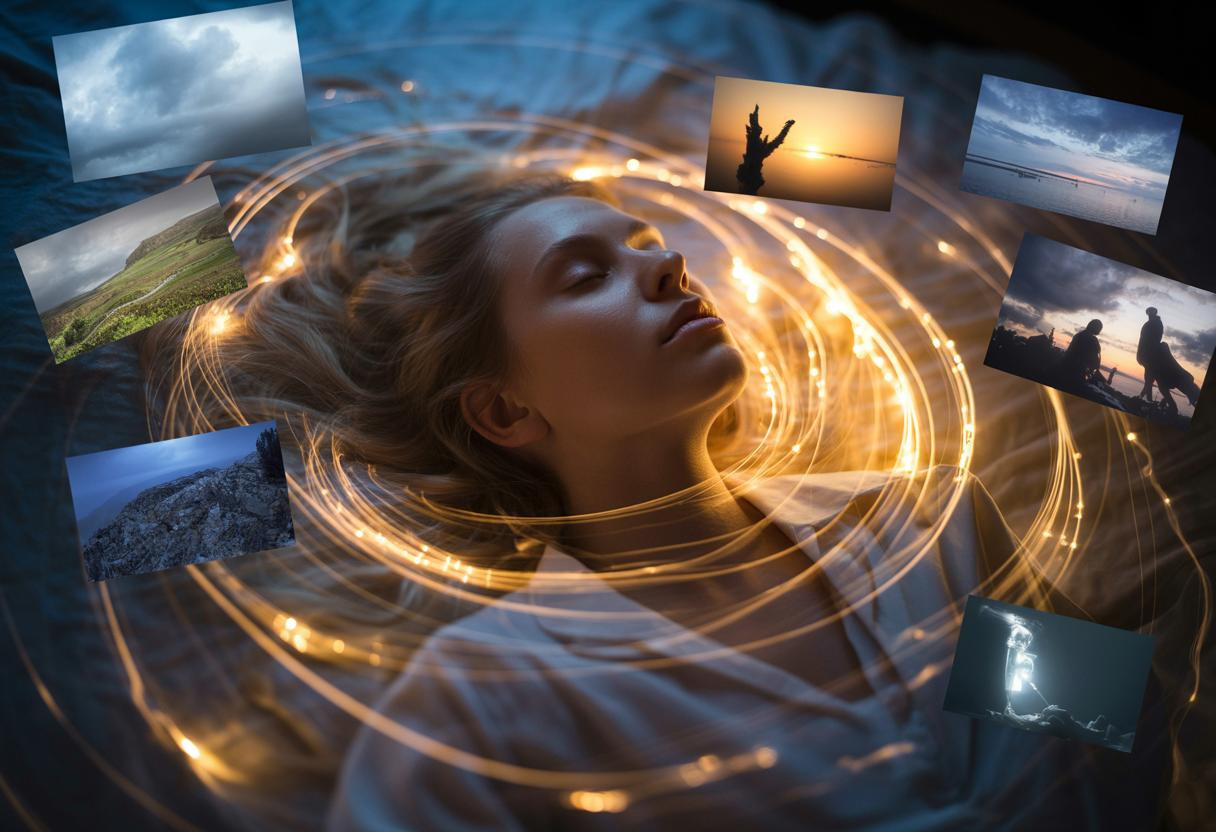When I heard that a simple visualization technique could help someone fall asleep in just 5 minutes, I was skeptical—until I discovered the fascinating neurobiological science that makes this sleep induction method remarkably effective for millions of people worldwide.
The brain science behind rapid sleep visualization
Recent neurological research reveals that visualization activates specific processing networks in your brain, including the default mode network and sensory cortices. When you construct mental scenes, your brain shifts from beta waves (active thinking) to alpha and theta states associated with deep relaxation.
This cognitive reorientation works by engaging your visual cortex and limbic system while simultaneously suppressing verbal thinking in the prefrontal regions. The process triggers measurable neurochemical changes, reducing cortisol levels while increasing GABA and serotonin—the same compounds that naturally prepare your body for sleep.
Studies using actigraphy technology have documented a 10-minute reduction in sleep onset latency when participants practiced nightly visualization, with some individuals achieving even faster results through specialized techniques.
Why peaceful scene construction works so effectively
Cognitive overload prevents racing thoughts
The technique works through what researchers call “cognitive shuffling”—deliberately saturating your working memory with neutral, multisensory imagery. This blocks rumination loops that typically keep people awake by dividing your brain’s attention between constructing the peaceful scene and monitoring intrusive thoughts.
Unlike traditional counting methods, visualization requires sustained engagement with textures, sounds, and emotions within your imagined environment. This comprehensive mental engagement effectively crowds out anxiety-driven thought patterns that interfere with sleep onset.
Multisensory activation enhances relaxation response
The most effective visualizations incorporate multiple sensory details simultaneously. Research shows that imagining the feeling of warm sand between your toes, the sound of gentle waves, and the scent of ocean air creates a more robust relaxation response than single-sensory imagery alone.
This multisensory approach mirrors techniques used by competitive athletes who use mental visualization to enhance performance, demonstrating the power of detailed mental imagery to influence physiological states.
Unexpected advantages over other sleep methods
Unlike mindfulness meditation, which requires months of practice to show significant results, visualization can produce immediate sleep benefits on the first night of use. The technique also surpasses traditional relaxation methods because it actively redirects mental energy rather than simply attempting to suppress thoughts.
Perhaps most surprisingly, research indicates that the specific content of your visualization matters less than the cognitive engagement process itself. Whether you imagine a beach, forest, or mountain scene, the neurological benefits remain consistent as long as you maintain detailed sensory focus.
Optimizing your nightly visualization practice
Scene selection strategies
Choose locations that feel naturally calming but avoid places with strong emotional associations. Neutral environments like unfamiliar beaches or peaceful meadows work better than childhood bedrooms or vacation spots that might trigger memories and extend wakefulness.
The most effective practitioners rotate between 3-4 different scenes to prevent habituation, similar to how 5-minute daily wellness routines maintain their effectiveness through variety and consistency.
Timing and technique refinement
Begin your visualization immediately upon lying down, before your mind shifts into problem-solving mode. Focus on dynamic details within your scene—swaying trees, shifting clouds, or gentle water movement—to maintain engagement without overstimulation.
If intrusive thoughts interrupt your visualization, acknowledge them briefly then return to constructing sensory details. This approach, influenced by ancient mental techniques for stress reduction, builds resilience against nighttime anxiety patterns.
The remarkable simplicity of effective sleep
The beauty of nightly visualization lies in its accessibility—requiring no special equipment, training, or significant time investment. By understanding the neurobiological mechanisms behind this technique, you can harness your brain’s natural imagery processing systems to achieve the peaceful sleep that has likely eluded you for far too long.
